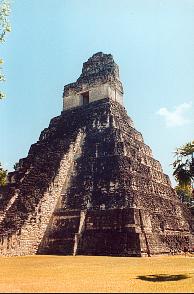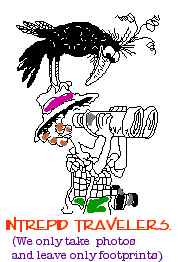 Log Book: Guatemala, Central America, 1999
Log Book: Guatemala, Central America, 1999One of things homeschoolers can do with ease is to add travel to school schedules. At the beginning of the year I look at what sort of topics we plan to explore during the school year, and then my student and I plan our “field trips”. We’ve used field trips for Art, World Culture, Foreign language, Science, Engineering, Geography and History.
One of the best field trips we’ve added to our curriculum was an excursion to Guatemala, Central America. The plan was to visit and learn about the modern and ancient Maya and to practice our Spanish. Before we departed, we made a map of Guatemala and located the places we were going to visit. On the agenda was Antigua, Lake Atitlan, Santiago, Chichicastenango, Tikal and Guatemala City.
We chose March for our visit because we knew there would be many colorful fiestas as this is the most festive time of the year in Guatemala. Antigua was especially colorful as it was once the capital of Guatemala. Antigua has returned to small town status but has a lot of “big city” architecture that survived the years of earthquake activity that caused the capital to be moved to Guatemala City. There are a few “Americanized” places to stay as well as authentic posadas and guest casas.
The high country in Guatemala is not for the accidental tourist. To be a true traveler, you must remember to take the culture as it is and to not compare it to American standards. The rural Mayan live very well and are accustomed to hard work, hard play and a dedication to traditional ways. Spanish is a requirement in the high country, as well as a knowledge of local customs. It is not unusual to see armed military personnel in places like banks and pharmacies. It is also not unusual to see the traditional Mayan walking along the road in the same sort of garb, worn for thousands of years. The latter is more common.
Market day is a colorful event where locals meet and greet each other to buy and sell wares from the different villages. Each village or town has their own color weave and pattern in the garments they wear. Santiago Atitlan, a village that is located on Lake Atitlan, at the base of two volcanoes, is the is the largest, most traditional lake town and is the capital of the Tzutuhil Indians. This village is famous for the quality of weaving and most people still wear the striking traditional costume. Chichicastenango holds one of the largest markets in the high country. Market Days are Thursdays and Sundays, and this has been tradition for hundreds of years.
El Peten Itza, home to the famed wood carvers of EL Remate, is also a good base for an outing to Tikal, an excavation in progress. Tikal is the most famous and impressive of the Mayan ruins. 50,000 - 100,000 Mayan lived there at it’s height in 600 AD. Archeologists have recovered 226 square miles of structures and monuments so far. Tikal is an excellent site for observing how these detectives of the ancient world go about their work.
When we returned we built a website to journal our trip: MayaWeb
 How you feelin?
How you feelin?
 Life
as a homeschooler and in constant daily contact with a highly gifted student
brings an energy I can't explain, yet drains me; makes me think about
things in a new way, yet causes me to stick with tried and true methods;
makes me strive for accomplishing all the tasks I need to, yet causes
me to think forward to the time my student will go to bed and I can have
a cup of tea and listen to Jimmy Buffet in peace and quiet. Eclectic.
That's the description of the path I am enjoying on my journey right now.
Eclectic is also our homeschool "style". We do what works. We
dig in the dirt or the beach sand, we kayak on rivers, we read, we travel.....
Life
as a homeschooler and in constant daily contact with a highly gifted student
brings an energy I can't explain, yet drains me; makes me think about
things in a new way, yet causes me to stick with tried and true methods;
makes me strive for accomplishing all the tasks I need to, yet causes
me to think forward to the time my student will go to bed and I can have
a cup of tea and listen to Jimmy Buffet in peace and quiet. Eclectic.
That's the description of the path I am enjoying on my journey right now.
Eclectic is also our homeschool "style". We do what works. We
dig in the dirt or the beach sand, we kayak on rivers, we read, we travel.....